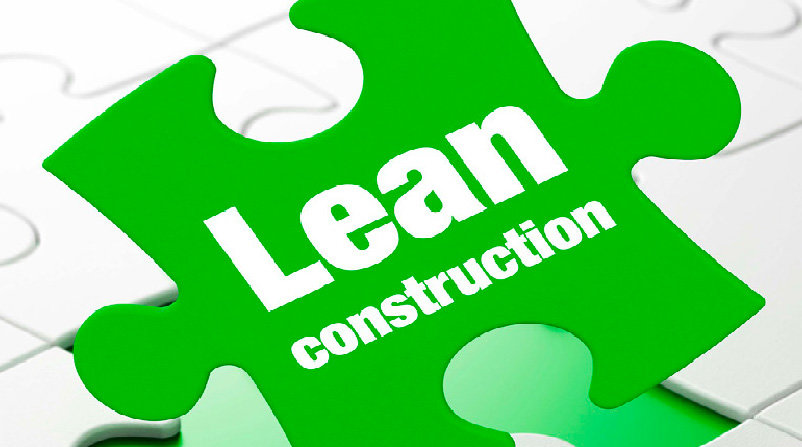The CIF helping SME Contractors get Lean
Lean Construction is rising in popularity and this is due to the work of Lean Construction Ireland (LCI), the Construction Industry Council, Irish contractors and consultants and the influence of Foreign Direct Investment (FDI) clients. Irish building magazine spoke to the CIF’s Sean Downey about the CIF’s work on promoting Lean Construction and what it can offer SME contractors.
Sean Downey is a Director at the Construction Industry Federation (CIF). He has responsibility for Specialist Contracting. This involves managing specialist and subcontractor trade associations to assist in the development of professional, efficient contracting businesses, leading initiatives on innovation, BIM and continuous improvement. Sean is also a Board Member on the National BIM Council. Irish building magazine has covered the rise of Lean at home and abroad. SMEs (small and medium-sized enterprises) have become interested in the advantages Lean Construction can offer their businesses, and we spoke to Sean about this. He told us about the requirements, available supports, and where contractors can find out more.
Sean told us about the work the CIF has done on exploring the advantages of Lean for its members and the Irish Construction Industry. “The CIF was involved in the establishment of the LCI with industry partners. The CIF have been supporting LCI events from the start. We have driven Lean awareness and promoted events throughout the country. In 2013, we were involved in a pilot project with a number of companies who were involved in the FDI market to identify if Lean works for construction and what the Lean tools could do for contractors’ operations. It was a very successful pilot, 85 to 90% of the participants started their Lean journey and continuous improvement after this.”
Benefits and Application of Lean
We asked Sean what are the benefits of Lean for Irish SME contractors and why should they look at this approach to their construction operations. “It allows contractors to put a structure on their operations. Tools like 5S and Value Stream Mapping allow contractors to assess and audit how their operations are actually carried out. They can look at waste management, defect analysis and see where the value is added and where the waste is and ask is there somebody paying for this time and is this waste. The second reason is marketability. If you don’t have an understanding of Lean you are not going to be invited to bid, or you won’t pre-qualify or pass through the tendering process.” Sean spoke of the benefits for the SME client. “It provides clients with a deeper understanding of their construction process. It challenges them to look at who is doing what and why they are doing it and gets them to assess their traditional methods of procurement, which involve professionals working in silos.”

Clients are demanding BIM and Lean from the large contractors; we asked him if clients are demanding Lean from SME contractors. He said, “Yes, they are in the FDI market and now in the public sector projects such as hospitals where there is an intensive delivery programme. Some contractors are bidding for jobs and bringing Lean to the table and clients are recognising the benefits and those contractors are winning work because of it. This is happening because of consultants’ involvement in the private sector.”
He said there is a strong interest in Lean among SME contractors, specifically those working in FDI market. “In the high process and highly technical projects and environments, there is an interest. In FDI projects, such as medical technology and pharmaceutical projects there is a strong interest. You must have an understanding of Lean in these sectors, you must know what is going on as you will be in meetings and you will be asked questions on Lean, and what is being done on the project.”
Sean has received positive feedback from contractors who have adopted Lean. “It can be a game changer. When it is ingrained in a contractor’s culture it can have an effect on the returns on a project. It is helping remove risks on projects. Working with Lean principles in IPD (Integrated Project Delivery) contracts, it helps weak performers and brings these along with the stronger partners.”
Lean has been successfully applied on large projects in Ireland, and contractors’ employees have been given the roles of overseeing the Lean aspect of the projects. “Pharmaceutical projects and the large projects have Last Planners engaged and fully employed, and they are employed on data centre, medical technology and manufacturing facility projects where Lean is required”, Sean told us.
Some CIF members involved in Lean on FDI projects in Ireland have used their skills in building data centres and other facilities abroad: in the UK, Scandinavia and mainland Europe. He said, “I have seen detailed examples of where Lean has been applied abroad and great efficiencies have been achieved.” We asked what types of contractors are leading the way in Lean Construction in Ireland. Sean said, “The M&E contractors, they are process-heavy and involved in tool installation; the second type are the AEC: structural contractors, cladding contractors; the third are those who are bringing back experience from abroad.
Requirements, Resources and Funding
Lean Construction is becoming a part of mainstream construction management education. Sean told us about the Lean Construction education and training that is available in Ireland. “There are a number of CPD programmes available. There is the Lean Start, Lean for Beginner programmes. There are a lot of private enterprises involved in delivering Lean Construction training. Lean is included in Bachelor of Science, Bachelor of Engineering, and Master of Science courses in the Irish colleges.”
We asked him if there are any grants/funding available. “Yes, there are grants available. Innovation vouchers from Enterprise Ireland are available. Enterprise Ireland have a triple stage approach to Lean: Lean Start, Lean Improve and Lean Transform. These are for companies at different stages, companies at the beginning of the journey, companies who want to progress, and those who are transforming to the Lean approach.”
Adopting Lean Construction requires commitment and allocation of resources and much communication internally. “Contractors must have leadership, buy-in and understanding. Contractors must understand Lean when speaking to clients. They need to have the right information; Lean Construction is not new ‘management speak’, there must be a culture change and improved communications to undertake operations. There need to be new ways developed about streamlining your business. Contractors need coaching and proper third-party support to help move through the stages of transition. They need to make small steps and make a start on a journey of continuous improvement.”
Sean’s Advice on Lean and BIM
Sean said contractors and other construction SMEs interested in Lean should join Lean Construction Ireland. “I recommend looking at the LCI website. They have great free webinars from contractors implementing Lean and you can learn a lot from these. It is a free resource. There are a lot of people there offering their time and expertise free of charge and you can hear practical examples of how Lean tools were implemented in the construction industry. To see how others have done it and brought their business forward can be very useful and motivational.”
BIM and Lean Construction are complementary and BIM will play a significant part in the success of Lean Construction in Ireland. Sean said, “I would say BIM is a Lean tool. It is here to stay. Contractors must become BIM enabled in the next 5 years; otherwise, they will be left behind. They need to see how to bring BIM into their business and after developing BIM capability use this to bring Lean into their business.”
Giving advice to SME contractors interested in researching Lean, he said “Focus on the technical workshops and Lean tool applications, move away from publications on the concept of Lean, that is now well established. Look to see the metrics on the benefits and how contractors have brought their businesses forward will be of huge benefit.” If Irish building magazine readers want an example of the technical application of Lean tools, we recommend you read our interview with Richard Casey of DPS on ‘Direct Observation – Increasing productivity by eliminating interrupts to Trades’ in Issue 1 of 2017.
In the coming months, we will have interviews with Lean experts and keep readers up to date on Lean Construction news and events in Ireland.

